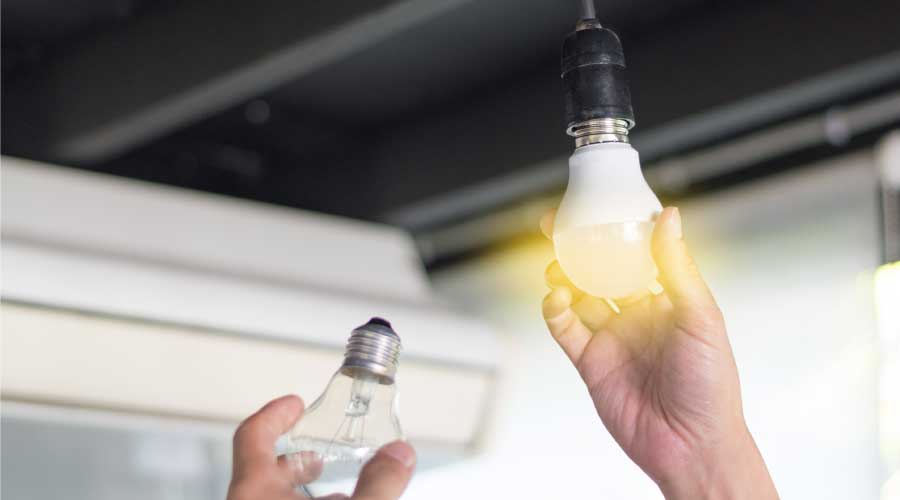 Both daylighting and tunable LEDs can help synchronize human circadian rhythms with the solar day. Research has shown that daylight helps improve student performance.
Both daylighting and tunable LEDs can help synchronize human circadian rhythms with the solar day. Research has shown that daylight helps improve student performance.The Value of Daylighting, Even With LEDs
Even when LEDs mimic sunlight, expert see LEDs as complementary to — but not replacing — daylighting strategies.
Daylighting’s positive effects on building performance and human health are well known. Rensselaer Polytechnic Institute's Lighting Research Center (LRC) studies have reported on how daylit environments increase worker productivity and comfort while synchronizing human circadian rhythms with the solar day. In addition, tapping daylighting can reduce electric lighting needs substantially.
On the other hand, Old Man Sol can sometimes be too bright and too warm, subjecting building occupants to glare and thermal stress. And sometimes the sun hides behind gray skies for days.
Today’s daylight LED (light-emitting diode) lamp marketers claim to offer Sol’s benefits, using very few watts. In fact, visible-spectrum LEDs have come a long way since their invention by Nick Holonyak in 1962. Using advanced controls, white-tunable LEDs can simulate sunrise, sunset, and the sun’s numerous variations throughout the day. Programming LEDs can even tailor applications to recreate artificial daylight that simulates an individual user’s geographic location.
The marketplace seems to be embracing LED technology. In “Top 8 Things You Didn’t Know About LEDs” (2013), the U.S. Department of Energy cited estimates that LEDs will make up 75 percent of all lighting sales by 2030. The report maintains that switching completely to LEDs over two decades could save the United States $250 billion in energy costs, trim electricity consumption for lighting by nearly 50 percent, and avoid 1.8 billion metric tons of carbon emissions.
Lighting experts see new tunable LEDs complementing – but not replacing – daylighting.
A tunable LED can vary its color temperature from sunrise/sunset color temperatures of 2200K to 2850K, adjust to around 3000K for early morning conditions, climb to 3500K for mid-morning light, reach 4000K for morning and afternoon conditions, achieve 5000K to simulate direct sun at noon and even simulate an overcast sky near 6000K. They accomplish these variations while consuming very few watts.
Some believe that tunable LEDs can re-create the outdoor light-dark cycle to help reinforce natural circadian rhythms. In education, for example, applying higher color temperatures in morning lectures may wake up sleepy student minds, while tuning back to lower color temperatures in the afternoon could help calm students.
Evaluating tunable LED performance
But how well do these new LEDs work? DOE’s Commercially Available LED Product Evaluation and Reporting Program (CALiPER) examined that question in “Report 23: Photometric Testing of White Tunable LED Luminaires” (2015 with 2016 addendum).
In that report, CALiPER tested eight white-tunable luminaires covering a range of color temperatures and dimming, or luminous intensity, situations. The report focuses on full-intensity measurements across 11 color setpoints and found “substantial variation” in input power, lumen output, efficacy, and color differences for many of the tested products.
The report also looked at color-tunable lamps intended for architectural lighting, namely troffers and downlights. According to DOE’s report, color-tunable LEDs “are currently not competitive with fixed-color products (of the same type) if efficacy is the prime criterion.” For downlight situations, color-tunable lamps were significantly below the Energy Star qualification threshold, according to the report.
“However, color-tunable products may offer non-energy benefits, such as the ability to shift spectrum to support human circadian cycles, affect mood and alertness, or provide a visually dynamic environment,” according to CALiPER Report 23.
So, for lighting applications where aesthetics, wellness, or occupant satisfaction are very important, Report 23 concludes that “color-tunable luminaires are capable replacements offering features not practically available with any other lighting technology.”
“The new LEDs do mimic some aspects of natural daylight,” says Robert Guglielmetti, a lighting expert in the National Renewable Energy Laboratory (NREL) buildings research program. However, he believes the scientific research necessary to document the health and wellness benefits and the support of circadian rhythm, etc. “is still emerging,” he says.
The research to which Guglielmetti refers is being done by photobiology and neurology scientists such as George Brainard of Jefferson Medical College at Thomas Jefferson University, who has been studying the connection between light and health benefits for 30 years.
Scientific studies are focusing on a recently discovered photoreceptor in the eye that mediates circadian, neuroendocrine, and neurobehavioral responses in human beings. This important research already is being incorporated into new architectural lighting standards. For example, Brainard has authored several standards for the Illumination Engineering Society of North America.
Related Topics:














